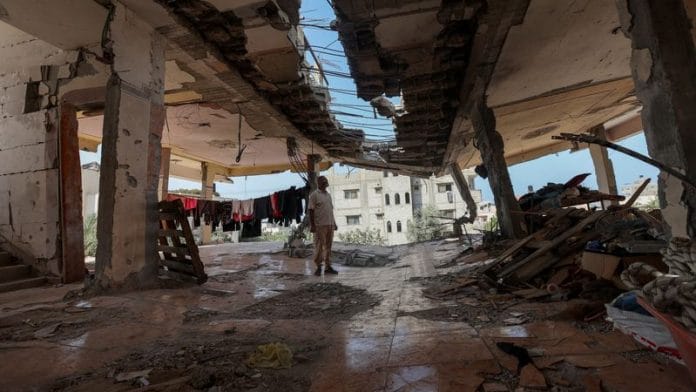New Delhi: Impact of wars have held back development in Gaza by 69 years, a mew UN report has revealed. The United Nations Development Program (UNDP) and the UN Economic and Social Commission for Western Asia (ESCWA) have issued a new joint assessment warning that the ongoing war in Gaza has had a severe impact on the Palestinian economy, pushing millions into poverty.
According to the assessment, titled ‘Gaza War: Expected socioeconomic impacts on the State of Palestine’, poverty in the region is projected to surge to 74.3 percent by the end of 2024, affecting 4.1 million people. This includes 2.61 million people who are newly impoverished.
The report also predicts a 35.1 percent contraction in the gross domestic product (GDP) in 2024 compared to a scenario without the war. Unemployment is expected to rise to 49.9 percent.
The assessment builds upon previous studies released in November 2023 and May 2024, incorporating new data and examining the extent of deprivation using Multidimensional Poverty indicators. It also explores potential recovery scenarios following a ceasefire.
The report has suggested that a comprehensive recovery and reconstruction plan, combining humanitarian aid with strategic investments and the removal of economic restrictions, could help restore the Palestinian economy to pre-war levels by 2034.
The assessment outlines three early recovery scenarios. The first two scenarios assume restricted or no early recovery, with the continuation of restrictions on Palestinian workers and the withholding of clearance revenues to the Palestinian Authority. The only difference between these scenarios is the level of humanitarian aid provided.
Under the first scenario, with no early recovery, humanitarian aid remains unchanged at current levels. Under the restricted recovery scenario, the assessment assumes a yearly inflow of US$280 million in humanitarian aid. Projections for both scenarios show that recovery to pre-war levels would take at least a decade, highlighting the limitations of relying solely on humanitarian aid.
The third scenario, Non-Restricted Early Recovery, assumes the lifting of restrictions on Palestinian workers, the restoration of withheld clearance revenues, and an annual allocation of US$290 million for recovery efforts. This scenario projects a 1 percent annual increase in productivity, enabling economic recovery and aligning with Palestinian development plans.






